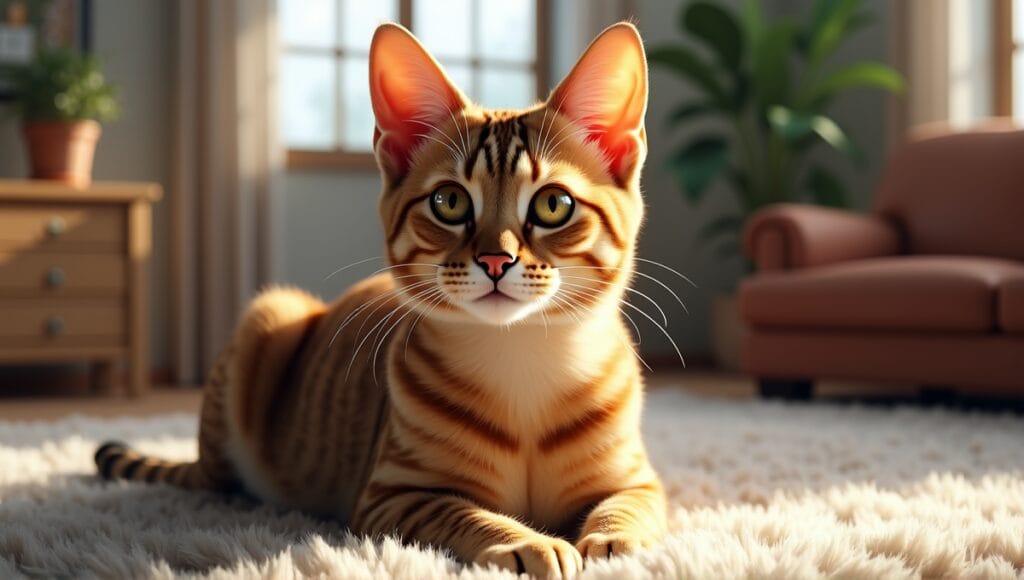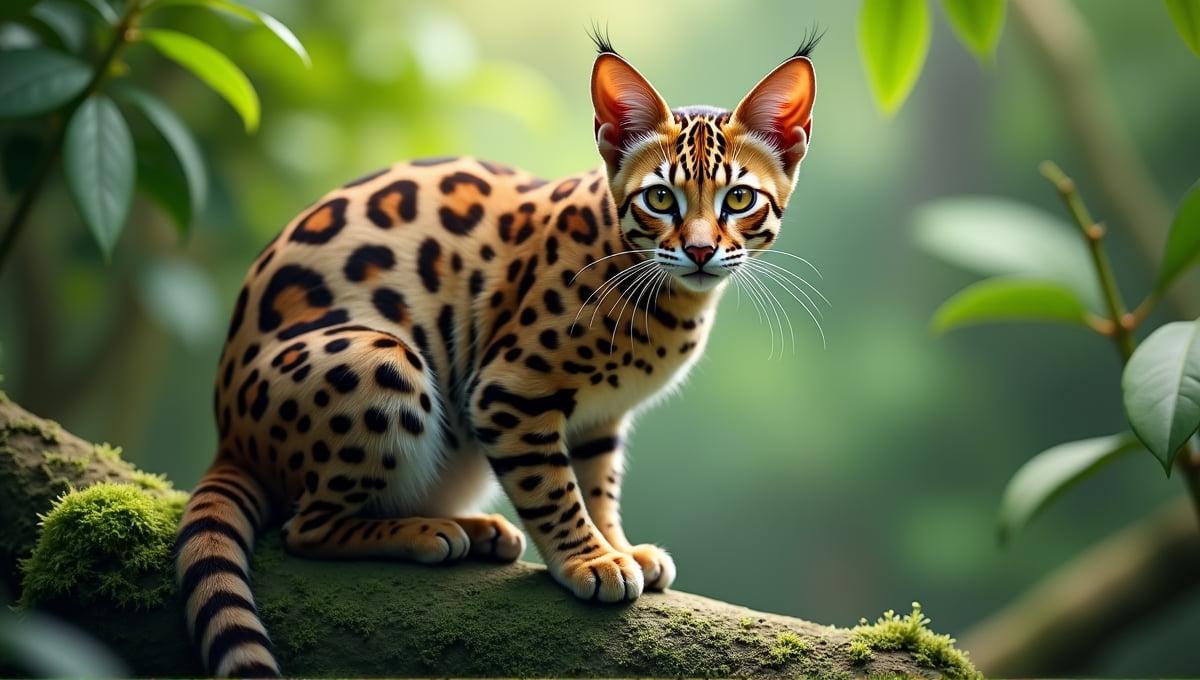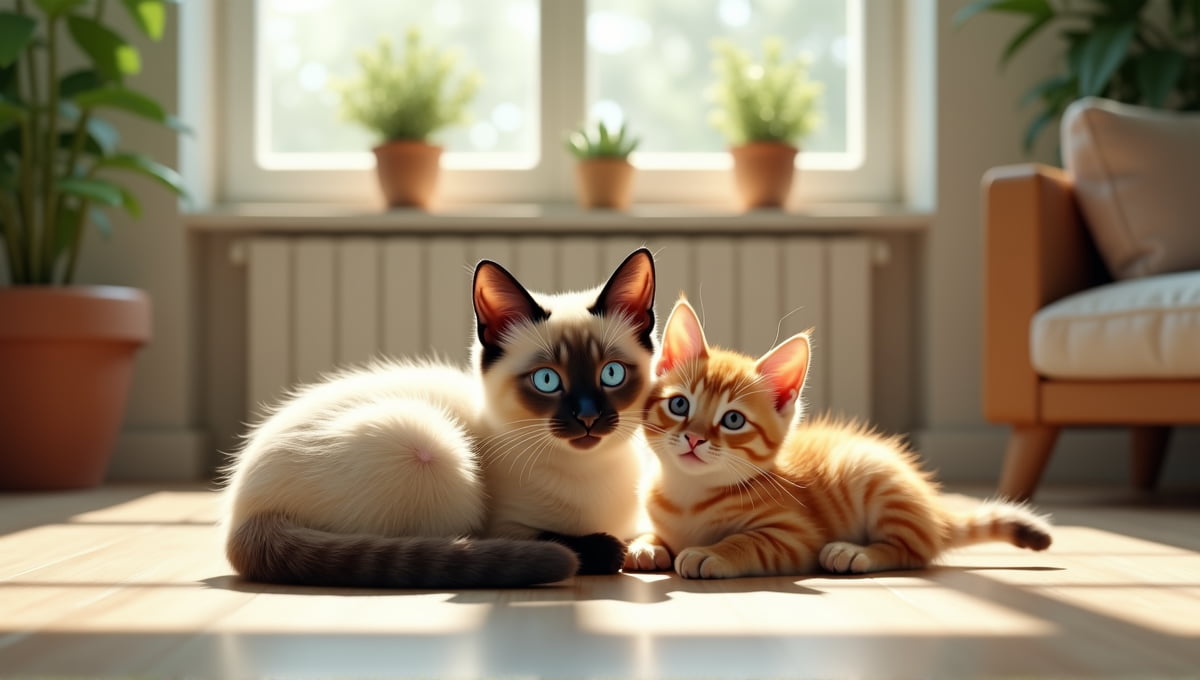Caracal cats are exotic, wild cats with long ear tufts, and as a cat enthusiast, I’ve done extensive research on these stunning animals. Perhaps you’re wondering if they make great pets for a family. In short, the answer is no.
Caracals are not domestic animals, and they have unique requirements that the average household cannot accommodate. Here’s why these cats should remain in the wild and not in your home.
Caracal Cats: Physical Characteristics

Caracal cats are stunning animals. What’s the most obvious visual characteristic of a caracal? Those long black ear tufts. They can measure up to 1.75 inches in length. And they’re functional, not just aesthetic. Ear tufts help caracals’ ears pick up more sound, and these cats use them to communicate with other caracals.
They’re medium-sized cats, and they’re robust. Here are a few caracal cat statistics:
- Length: 2.5 to 3.5 feet
- Height: 16 to 20 inches at the shoulder
- Weight: 25 to 40 pounds
Caracals have a plain tawny brown or reddish gold coat, making them blend in with their natural environment. Their underbellies are lighter with small spots.
Their facial features are outstanding. They have large, striking eyes with white outlines. And they have a black line that runs from the corner of their eyes to their nose, which always makes them look a bit angry.
I’ve always found it interesting that caracals are built like tanks. With their long legs and muscular body, speed and agility are no issue for them. And you can see power in every step these cats take. If you’re interested in learning about other exotic cat breeds, there are many fascinating species to explore.
Habitat and Distribution of Caracal Cats
Caracals are versatile cats. They’re found throughout Africa, the Middle East, and various regions of Central and South Asia. These cats thrive in a range of habitats. You’ll see them in savannas, woodlands, semi-desert areas, and even hilly regions.
Their ability to inhabit different climates is remarkable. Caracals can live in regions with very little water. Unlike many other cats, caracals obtain most of their water from food. This adaptation allows them to survive in areas where other cats cannot.
Caracals also tolerate a range of elevations. People have documented caracals at elevations as high as 8,900 feet. That’s higher than many mountains!
Unfortunately, human activity is destroying caracal habitats. The main culprits are agriculture and urbanization. As we continue to expand our cities and farms, caracals lose their places to live. This is an increasingly significant issue affecting the future of caracals.
Hunting and Prey of Caracal Cats
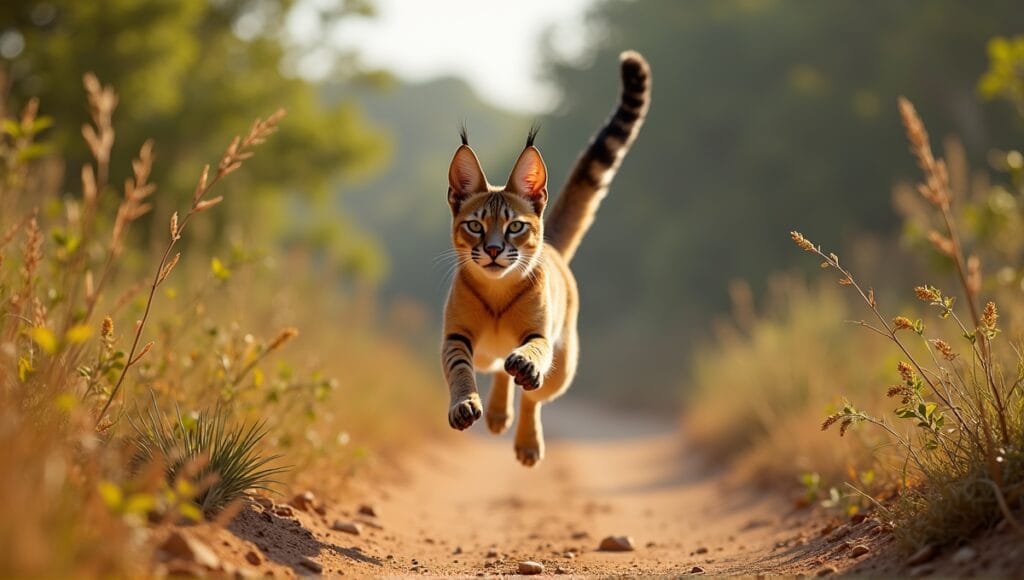
Caracals are impressive hunters. And of all their impressive hunting abilities, the caracal’s most impressive? It’s a jumper. Caracals can jump up to 10 feet in the air from a standing position. To put that in perspective, that’s like a human jumping onto a two-story building!
I’ve watched videos of caracals hunting birds midair. It’s a true spectacle. Using their powerful back legs, caracals bound vertically and take a swing at birds with their paws. It’s a great example of their agility and accuracy.
Additionally, caracals are not selective eaters. Their diet consists of:
Small antelope
Hare
- Rodents
- Birds
Small primates
Caracals have several physical adaptations that enable them to be efficient hunters. Large eyes offer excellent night vision. Sharp, retractable claws help the caracal capture and hold prey, and they have powerful jaws that can take down prey larger than themselves.
Caracals also play a critical role in their ecosystems. They help manage populations of small mammals and birds, which in turn helps maintain a healthy food chain. This is similar to how domestic cat hybrids can impact local ecosystems, albeit on a smaller scale.
Caracal Cat Behavior and Social Structure
Caracals are solitary animals. They don’t like living or hunting in groups. Instead, each caracal has its own territory which it marks with urine and scratch marks. Caracals are not generally territorial, but they do mark their territory. Males maintain larger territories which may overlap with several females.
Caracals are not super communicative cats. They primarily communicate through scent marking, yet they do have some vocalizations. You might hear a caracal purr, meow, or even make a barking noise.
Aside from approach each other to mate, caracals avoid other caracals. This allows them to mitigate competition with other caracals for resources.
These cats are most active during the night, so they are primarily nocturnal. While you may catch a glimpse of a caracal at any time, they are most active at dawn and dusk. During the day time when it’s particularly hot, they usually hide in dense vegetation or in rocky outcrops. This behavior allows them to conserve energy and avoid the hottest parts of the day.
Breeding and Development of Wild Felines
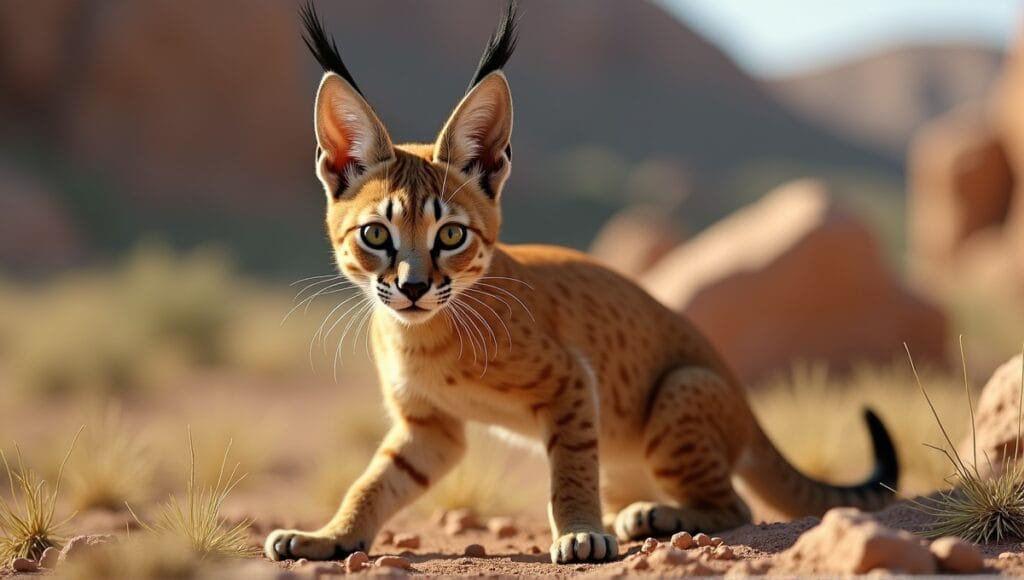
Caracals breed throughout the year, so there isn’t a specific season you need to worry about. However, most births tend to occur when the kittens will have the most abundant food supply.
The gestation period for caracals is approximately 78 to 81 days, which is similar to that of a domestic cat. A female caracal will produce a litter of 1 to 6 kittens, although 2 to 3 is more common.
Caracal kittens mature quite rapidly. Here’s an overview of their growth process:
- Birth: Blind and helpless weighing around 250 grams
- 6 to 10 days: Eyes open
- 4 to 6 weeks: Begin to eat solid food
- 3 months: Learn to hunt
- 9 to 10 months: Independent
In the wild, caracals typically live to be around 12 years old. However, with the appropriate care in captivity, they can live up to 17 years. This is a long time for a wild cat!
I’ve always been impressed by how fast caracals grow up. At just one year old, they’re already out on their their own. It shows just how resourceful and adaptable they are. If you’re interested in learning more about cat breeding in general, it’s a fascinating topic with many nuances.
Feline Predators and Their Relationship with People
Caracals have a long history with humans. They were depicted in wall paintings in ancient Egypt and even occasionally mummified. The ancient Egyptians considered them sacred animals associated with various gods.
Today, you can observe caracals in many zoos and wildlife parks. They’re a popular exhibit because of their unique appearance and incredible jumping skill. However, they make terrible pets. Caracals are wild animals with specific requirements that cannot be met in a average household.
In some areas, caracals come into conflict with humans. They occasionally kill livestock, prompting farmers to retaliate. As a result, this is a major problem for caracal populations in many areas.
In the past, caracals were used to hunt in certain parts of Asia. There, people trained them to capture birds in the air, a practice called “coursing.” However, this practice is now virtually nonexistent.
The legal status of caracals varies by country. In many countries, it’s illegal to own one as a pet. A few countries permit ownership with the proper permits. Always research local laws before considering any exotic pet. It’s important to note that caracals are very different from friendly cat breeds that are suitable as pets.
Survival Challenges and Environmental Risks for Lynx-like Felines
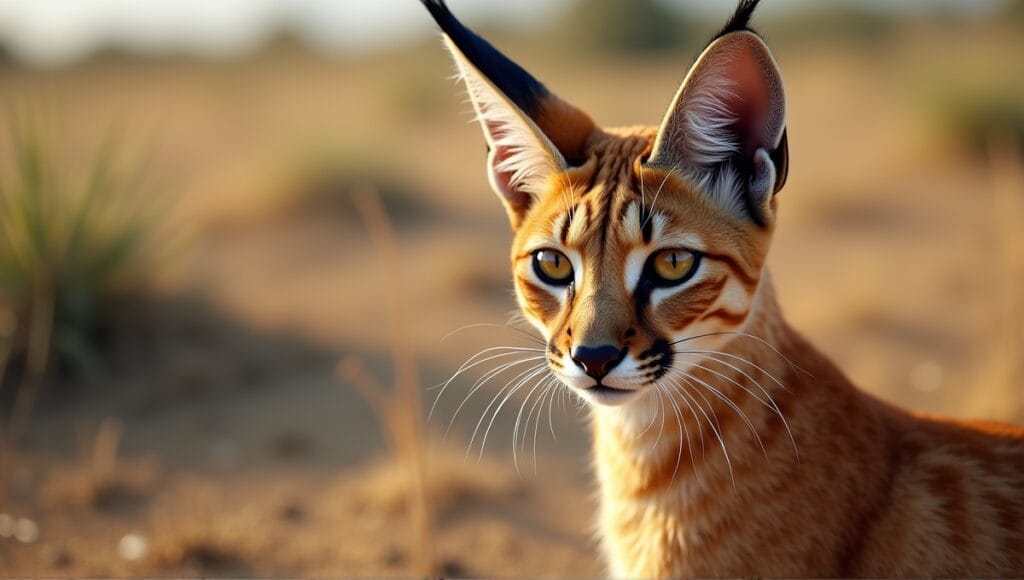
Caracals are currently classified as “Least Concern” by the International Union for Conservation of Nature (IUCN). That might sound positive, but it doesn’t mean caracals aren’t experiencing significant challenges.
The primary threats to caracals include:
- Habitat destruction from human encroachment
- Conflict with farmers regarding livestock killing
- Historical fur trade (this is less of a concern today)
- Road mortalities in human-developed areas where caracals still exist
- Conservation efforts for caracals primarily involve protecting their remaining habitats.
Many countries have established protected areas to safeguard caracals and their natural environments. Additionally, educational initiatives help mitigate conflict between humans and caracals.
The long-term outlook for caracals is uncertain. While they’re somewhat flexible in their adaptability, their fate ultimately depends on our ability to peacefully coexist with them. We must find methods to protect their habitats and reduce human-cat conflict.
I’ve also witnessed how educating the local people can transform their perspectives on wildlife. Once people understand the role caracals play in the ecosystem, they’re more likely to support conservation efforts.
Caracal Cats in Comparison to Other Wild Cats
Caracals are unique in the wild cat world. They’re frequently likened to lynxes because of their ear tufts, but they’re actually more closely related to servals and African golden cats.
These cats split off from other feline lineages about 8.5 million years ago. That’s a long time in evolutionary terms! This extended separate evolution has given them some unique features.
Their jumping ability is perhaps the most notable distinction. Many cats are good jumpers, but none can jump quite like a caracal. Their strong hind legs enable them to snatch birds right out of the air, a talent few other cats can match.
In the wild, caracals often compete with other mid-sized predators. This ranges from jackals to other smaller wild cats. However, their varied diet and resourcefulness make them a successful species in a variety of regions.
I’ve always found it interesting to compare caracals to house cats. While they share some commonalities, the caracal is much more athletic and has very different care requirements. It’s a great example of the remarkable diversity within the cat family. For those interested in learning about other unique felines, you might want to explore rare cat breeds that share some characteristics with wild cats.
In Summary
Caracal cats are truly remarkable animals. They have distinctive physical characteristics, impressive hunting skills, and are highly adaptable, making them excellent species to study. As we’ve learned about their physical characteristics, habitats, and behaviors, it’s evident that caracal cats are important species within their ecosystems. Conservation is essential to preserving caracals in the wild, so I trust you now recognize the importance of conserving these incredible animals.


